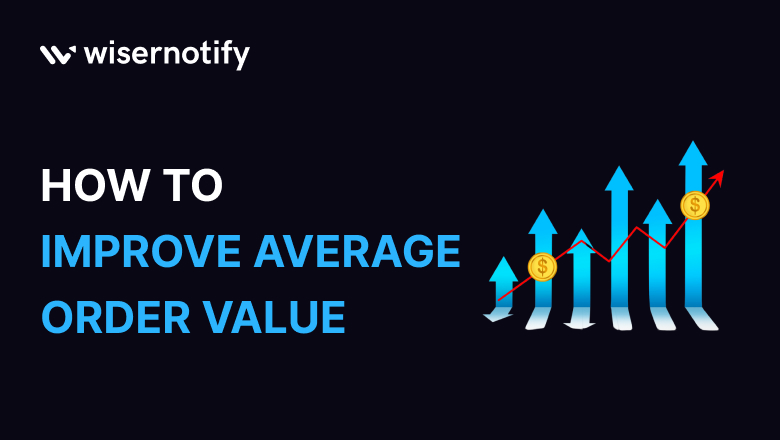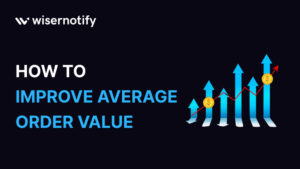Are you looking to boost your eCommerce store revenue without spending extra on acquiring new customers?
Increasing your average order value ecommerce(AOV) is a smart strategy. Did you know that just a 10% increase in AOV can lead to a significant rise in your overall sales?
This guide will walk you through practical and effective strategies to encourage loyal customers to add more to their carts.
Whether through upselling, cross-selling, or offering special discounts, we’ll cover proven ways to improve average order value, enhance your customer’s shopping experience, and grow your profits.
Let’s explore strategies for increasing the average order value and helping your eCommerce brand thrive.
What is the Average Order Value?
Increase Average order value is an important metrics in online shopping. It tells you the average amount of money customers spend in one order. To find it, you divide total money earned by the number of orders.
Online Businesses use AOV to understand customer behavior and create marketing and pricing strategies. They want to boost the average order value to make more revenue from each customer purchase.
This can be achieved by upselling, cross-selling, bundling products, or offering free shipping for orders over a set amount.
Build trust & FOMO
Highlight real-time activities like reviews, sales & sign-ups.
Why AOV Is a Crucial Metric for E-commerce Success
When your average order value is higher, you can make more money from your current customers. This allows you to increase revenue without spending more on marketing to attract new customers.
Average order values in ecommerce are crucial metrics for a business’s success for several reasons.
- Understanding customer behavior is important. Tracking the average order value gives insight into the typical customer’s buying habits, which can help you increase sales.
- You can use it to figure out how much you should spend on getting new customers. Your average order value should be much more than what it costs to acquire a customer.
- A higher average order value (AOV) can boost your company’s profits. AOV is closely linked to profitability. When AOV is higher, more money is earned without needing to spend more on customer service, delivery, or conversion.
- Increase average order values eCommerce to boost revenue, enhance customer satisfaction, and improve overall profitability.
How to Calculate Average Order Value
Average order value (AOV) is the average dollar amount a customer spends on your website per order. To find your website’s AOV, divide total revenue by the number of orders.
Calculate total revenue by adding up all the amount earned from sales within a certain time. Only include sales income, not money from other sources like interest or investments.
Count the total number of orders placed during that time. Divide the total revenue by the total number of orders to find the average order value.
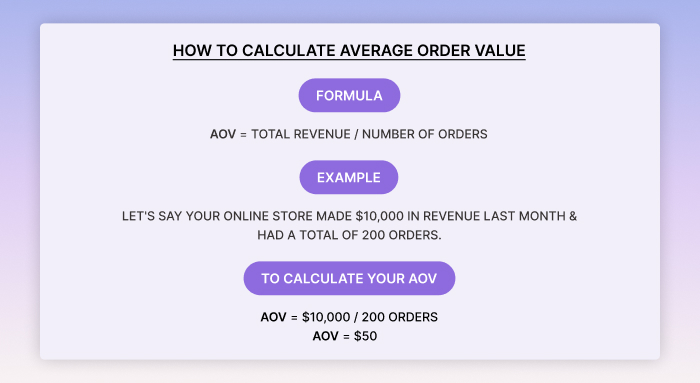
AOV = Total Revenue / Total Number of Orders
Let’s say in June, your online store made $10000 from 200 orders.
To find the AOV:
Your AOV would be 10000/200 = $50.
So, the increase average order value for June is $50. This means that on average, each customer spent $50 per order in your online store.
15 Best Strategies to Improve Average Order Value
Increasing your average order value (AOV) is crucial for more revenue without acquiring new customers. By implementing effective strategies, you can encourage customers to spend more each time they shop with you without needing to find new customers.
Here are 15 proven ways to Improve average order value and enhance profitability for your business.
1. Creating Loyalty Programs
Creating a loyalty program is a great way for businesses to encourage customers to spend more each time they shop, while also keeping them coming back.

- Tiered Rewards System: Create a loyalty program with different levels based on customers’ spending. Higher levels can offer special discounts, free gifts, and early access to sales.
- Points-Based Rewards: Customers earn points for purchases and can use them for discounts or free products. They can earn bonus points for bigger orders, encouraging them to spend more.
- Exclusive Offers for Members: Provide exclusive deals and offers to loyalty program members. For example, members could receive special discounts on high-ticket items or limited-edition products.
- Cross-Selling and Upselling: Use loyalty programs to promote related products or upgrades. Offer incentives like bonus points for purchasing complementary.
Must Read: Best Ecommerce Loyalty Program Strategies and Examples
2. Offering BOGO (Buy one, get one) Deals
Offering buy-one-get-one deals can be a smart way for businesses to increase sales and encourage customers to spend extra money.

- Encouraging Larger Purchases: BOGO deals motivate customers to buy more because they feel like they’re getting extra value. For example, if they buy one item, they get another one for free or at a discounted price.
- Promoting Products: Businesses can use BOGO deals to promote products. For example, if someone buys a pair of shoes, they might get a belt for free or at a reduced cost.
3. Limited Time Offers
Limited-time offers are a great way for businesses to create urgency and encourage customers to make a purchase.
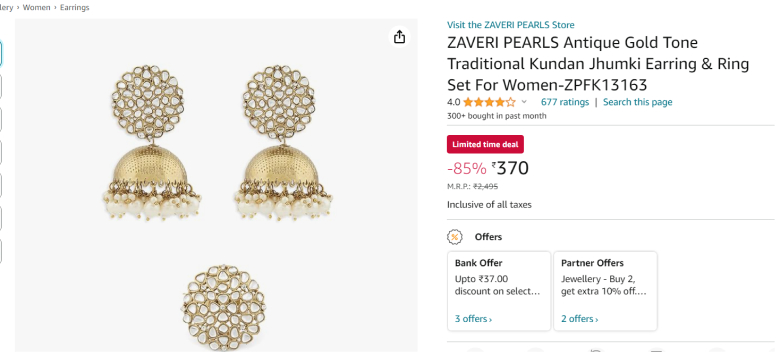
- Creating Urgency: By setting a deadline, like “Offer ends tonight,” businesses motivate customers to act quickly. This urgency prompts them to make a decision sooner rather than later.
- Promotional Discounts: Businesses can offer discounts or special deals for a limited time. For example, customers might get 20% off their purchase if they buy within a specified timeframe.
4. Offering Volume Discounts
Offering volume discounts can be an effective strategy for businesses to increase AOV and encourage larger purchases.
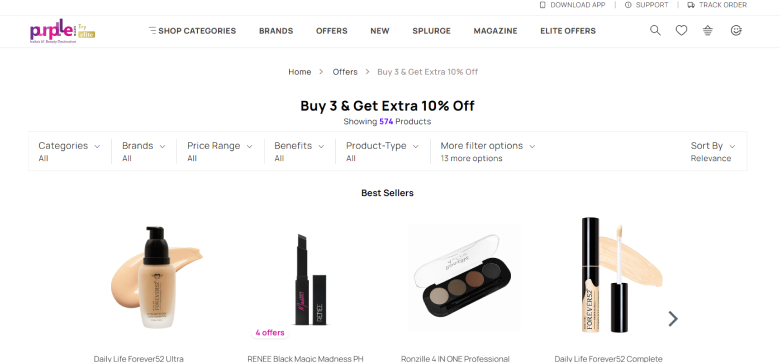
- Encouraging Big Orders: Volume discounts give customers a price break when they buy larger quantities. For example, “Buy 3 get 10% off” or “Buy 5 get 20% off”.
- Attracting Bulk Buyers: Volume discounts are particularly appealing to customers who need to buy in bulk, like businesses or larger families. Offering these discounts can attract a new segment of buyers.
5. Offering a Flexible Return Policy
Offering a flexible return policy is all about keeping existing customers happy and coming back. It means making it easy for customers to return items they’re unhappy with, without any hassle.
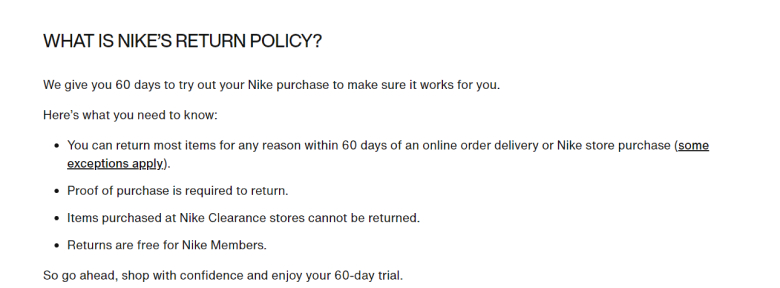
- Extended Return Periods: This gives customers more time to decide whether to keep the item. For example, instead of a 30-day return window, a business might offer 60 or 90 days.
- Hassle-Free Returns: Making returns simple with options like prepaid labels or easy in-store returns helps customers feel valued. It reduces stress and encourages repeat business.
6. Offer Free Shipping Threshold
Offering a free shipping threshold is a strategy where online stores set a purchasing amount that qualifies customers for free shipping.

- Minimum Purchase Amount: Customers qualify for free shipping by spending a specified purchase value, like $50 or $100.
- Category-Specific Threshold: Free shipping applies to certain product categories when customers spend a set amount within those categories.
- Membership Benefits: Members or subscribers enjoy free shipping as a perk, fostering loyalty and repeat purchases.
- Promotional Free Shipping: During special promotions, online businesses may temporarily waive shipping costs for all orders.
7. Leveraging Personalization
Leveraging personalization involves using information from a customer’s order history. By analyzing what customers have purchased before, ecommerce brands can tailor their offerings.
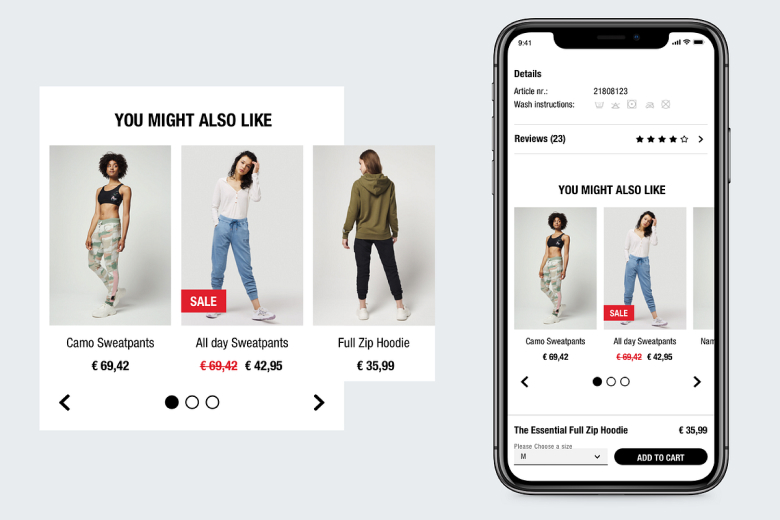
- Tailored Recommendations: Use your data to find out common shopping patterns. Knowing what your customers like will help you create a personalized list of product recommendations.
- Data Collection With Quiz: Hosting a fun quiz can help gather customer information to suggest further products.
8. Building Trust and Loyalty
Building trust and loyalty with customers is essential for any business.
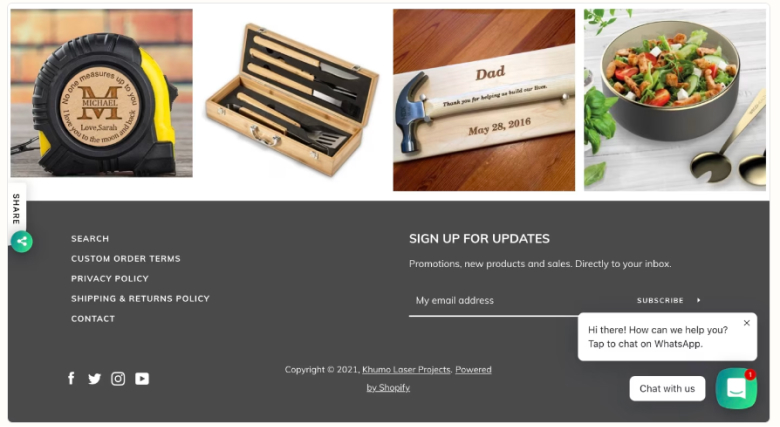
- Exceptional Customer Service: Providing prompt and helpful support ensures customers feel valued and cared.
- Transparency and Honesty: Being transparent about products, policies, and pricing builds trust and sets realistic expectations.
9. Cross-Sell Complementary products
Cross-selling complementary products on the product pages involves suggesting additional items that pair well with the main purchase.
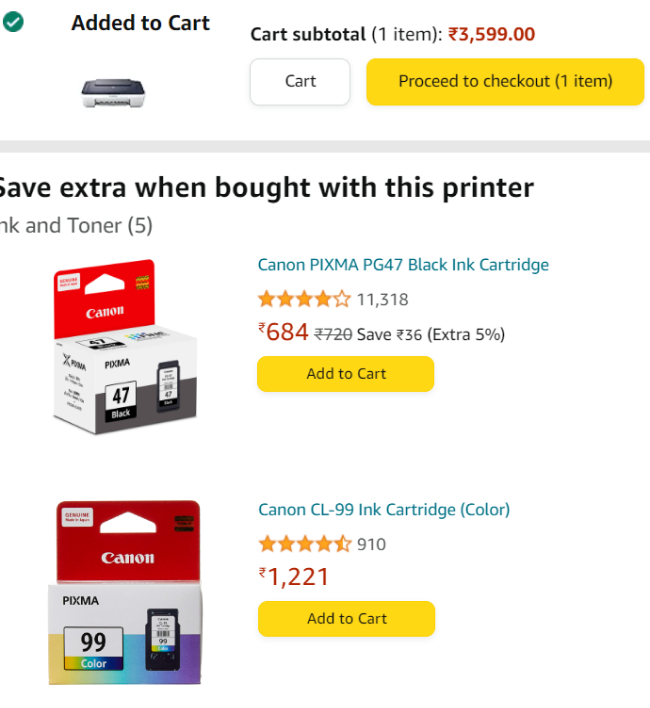
- Create Bundles: Bundle together items that naturally complement each other, such as pairing a laptop with a laptop bag and mouse.
- Cross-sell: When customers buy a printer, suggest related products that enhance the main purchase. For example, suggest printer ink or paper.
10. Use Popups
Using popups refers to displaying small windows or messages that appear on websites or apps to convey important information or prompt actions from users.
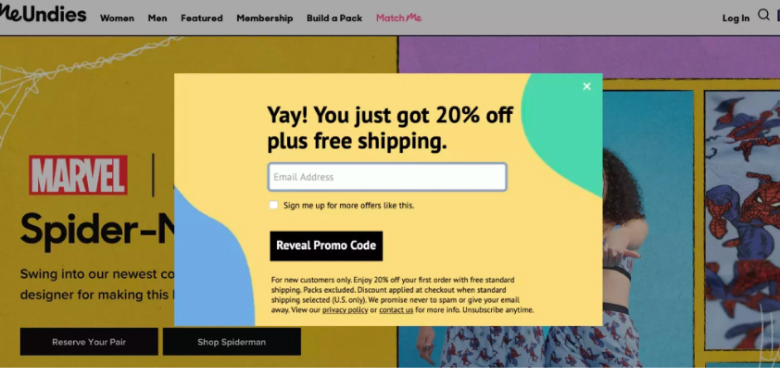
- Email Signup Popups: Encouraging visitors to subscribe to newsletters or updates in exchange for exclusive content or discounts.
- Exit-Intent Popups: These appear when users intend to leave the site and offer discounts or suggestions to retain their interest.
- Discount Offer Popups: Displaying special offers or promo codes to incentivize immediate purchases.
11. Flash Sales
Flash sales are limited-time promotions that can create urgency and excitement among shoppers.
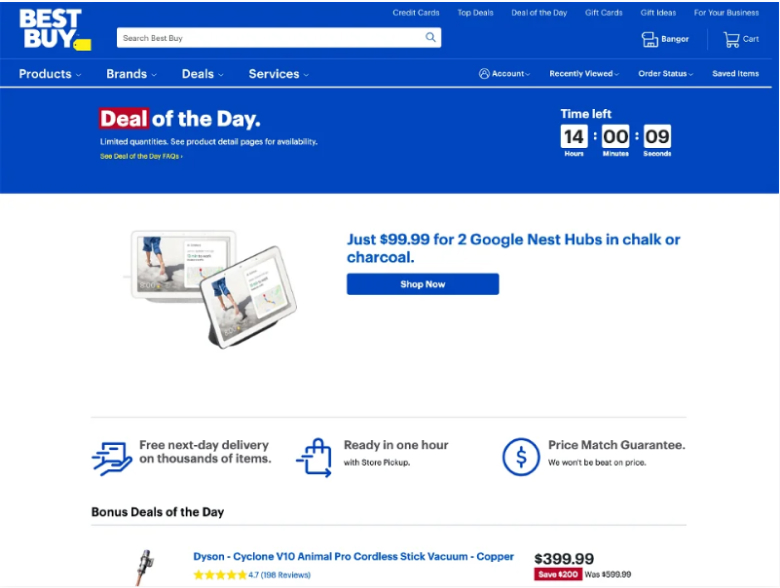
- Limited Quantity: Offering a small number of products at a deeply discounted price to encourage quick purchases.
- Countdown Sales: Showing a countdown timer to create urgency and remind shoppers of the sale’s limited duration.
12. Subscription Discounts
Subscription discounts offer incentives to customers who commit to regular purchases or services.
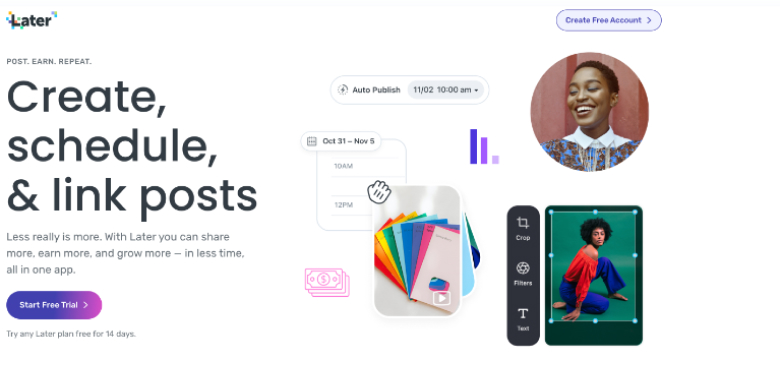
- Percentage off: Providing a discount on the subscription price, like 10% off monthly fees, to encourage sign-ups.
- First Month Free: Waiving the initial subscription fee as a trial period, enticing customers to try the service risk-free.
- Annual Payment Discount: Giving a discount for paying the full year upfront, motivating longer commitments and reducing monthly costs.
13. Tiered Pricing
Tiered pricing different pricing levels for products or services based on features, usage, or customer segments.
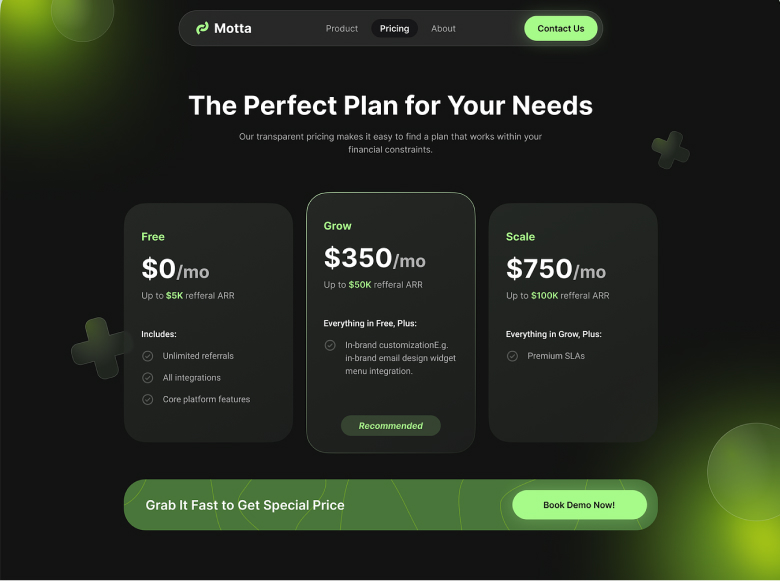
- Basic, Standard, Premium: Offering tiers with increasing features or benefits at higher price points. For example, basic might include essential features, while premium offers additional perks.
- Segmented Pricing: Tailoring prices for different customer groups, like student discounts or corporate pricing tiers based on volume.
14. Financing Options
Financing options provide customers with flexible payment plans to make purchases more affordable.
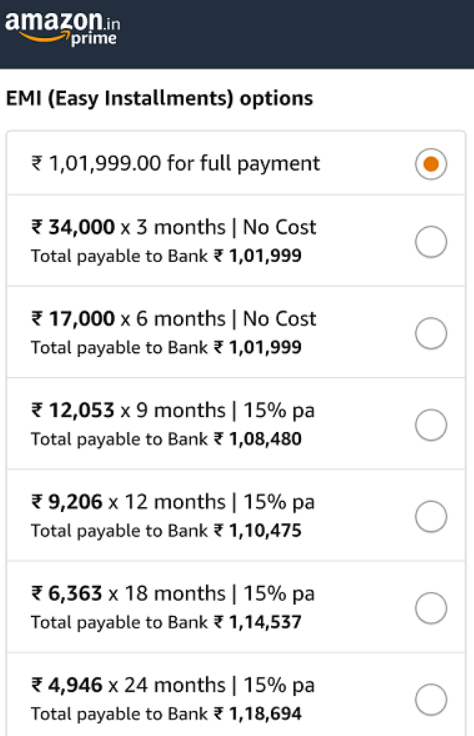
- Installment Plans: Splitting the total cost into smaller payments over a set period of time, like 3,6 or 12 months.
- 0% Interest Financing: This type of financing offers payment plans without additional interest charges for a specific duration, making big purchases more manageable.
15. Use Social Proof
To improve average order value, using social proof can be very effective.

- Customer Reviews and Testimonials: Showcase positive customer reviews from customers who bought more or upgraded their purchases.
- Celebrity or Influencer Endorsements: Highlight endorsements from well-known personalities or influencers relevant to your audience.
- Show Live Activity and Conversion Notifications: Leveraging social proof by displaying live and recent activities, as well as conversion notifications, can significantly boost your eCommerce site’s AOV.
Build trust & FOMO
Highlight real-time activities like reviews, sales & sign-ups.
Importance of Average Order Value
Average order value is crucial for any business because it directly impacts revenue growth. By understanding and increasing AOV, businesses can boost their sales without needing to attract more customers.
It helps maximize marketing efforts and improve overall profitability. Encouraging customers to spend more per transaction also strengthens customer loyalty and enhances their shopping experience.
Businesses, especially ecommerce brands, care a lot about average order value for many reasons.
➥ Understanding Customer Behavior
Boost Average order value (AOV) helps you understand your customer’s buying habits and behavior. It shows the typical amount customers spend in one transaction. You can use this data to group your customers, adjust your marketing strategies, and improve customer satisfaction.
➥ Evaluate Pricing Strategy and Marketing Strategy
AOV helps you evaluate if your pricing strategies are effective. If you try a new pricing plan or a marketing campaign and your AOV goes up, it means the new strategy is working. If it goes down, it may mean your strategies are not working as expected.
➥ Measure Business Performance
AOV helps you assess how well your business health is doing, along with other metrics like customer lifetime value (CLV) and conversion rate. You can use it to set goals, track your progress, and gain insights for growth.
➥ Identify Upselling and Cross Selling Opportunities
A higher average order value shows that cross-sell and up-sell are working well. You can track which products are often bought together and use this information for promotions. It also helps identify products that can be cross-sold or up-sold successfully.
➥ Revenue Generator
improving average order value is all about increasing revenue. Businesses can increase revenue by encouraging customers to spend more each time they buy without having to attract new customers.
Tracking and Measuring AOV Improvement Efforts
Tracking and measuring your A improvement efforts can help you understand how well your strategies are working.
Here are some simple ways to track and measure your efforts to increase AOV.
Sales Reports: Regularly review sales reports to track changes in AOV over time.
Segmentation Analysis: Use customer segmentation to analyze AOV variations among different customer groups.
Promotion Performance: Assess the impact of promotions and upsell/cross-sell strategies on AOV.
Cart Analysis: Monitor abandoned carts to understand potential AOV losses and adjust strategies.
Customer Feedback: Gather feedback to understand how pricing and product bundling affect AOV.
A/B Testing: Conduct A/B tests on price strategy and product offerings to identify what drives higher AOV.
CRM Data: Utilize CRM data to track repeat purchases and their impact on AOV.
Website Analytics: Analyze website traffic patterns to see how changes in user behavior affect AOV.
Build trust & FOMO
Highlight real-time activities like reviews, sales & sign-ups.
Conclusion
Increasing AOV is crucial for boosting your business revenue without needing to attract more customers. By implementing the 15 strategies we have discussed, you can encourage customers to spend more per purchase, enhancing their shopping experience while increasing your profits.
By understanding your customer needs and preferences, you can tailor these strategies to fit your business and see significant growth in your AOV.
